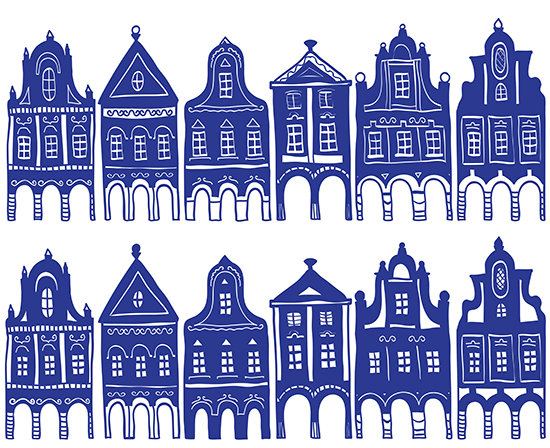So you’ve made the decision to buy a house in Holland. Alone or together with your real estate agent, you’ve found the perfect place and you can’t wait to move in and call it yours. Congratulations! There are many good reasons to purchase a house in the Netherlands: it is a smart investment with great financial incentives and tax benefits, and of course you get to decide how you want to decorate your living space, whether you want pets etc.
But before moving forward, you should know that the mortgage process in Holland is quite complex. In order to shed some light on this process and avoid unnecessary surprises, we have created a quick walk-through, to make the purchase of your new home a cakewalk. Below are the five steps to take to become a homeowner in the Netherlands.
- Check if you meet all requirements to get a mortgage. Dutch banks, as well as your mortgage provider, require a statement from your employer as well as proof of income. If you are self-employed, it might be more difficult to get a mortgage. In any case, you will be asked to provide details on all of your net income over the past three years. Whether you are an EU citizen or not also makes a difference: banks may enforce the requirements for buying a house in a stricter way for applicants from outside the EU. If you are eligible for the 30% tax reimbursement for expats, you may be able to get a better mortgage deal.
- Make sure you know about all the taxes, costs and fees that come with owning a house. These include, as part of the purchase price:
– 2% transfer tax
– 10% pre-sale agreement deposit
– 1,2% mortgage arrangement cost
– 2% estate agent fee
– 0,2% valuation, tax-deductible
– Notary fee
– Architectural inspection
– All additional costs that come with purchasing a property.
Your mortgage interest payments, as well as any increases in the value of the house, are tax-deductible through the so-called hypotheekrenteaftrek (HRA), as long as the house is used as the main residence, for a maximum 30 years. If you leave the Netherlands but keep the house, these tax deductions no longer apply.
- After you’ve made an offer on the property and it has been accepted, you can sign the purchase agreement at the notary’s office. You will probably need to pay the 10 percent deposit to the notary shortly thereafter, or have your mortgage broker arrange a bank guarantee. Make sure the agreement is non-binding in case you can’t get the funding. However, the agreement is often binding, in which case you will have to pay a fine if you can’t get the funding together before the deadline (which can be extended for a fee).
- Pick the right mortgage. Do you want to pay off your mortgage as soon as possible or do you prefer to wait and only pay interest for the next couple of years? There are many mortgages options in the Netherlands:
– Annuities mortgage: in the first years, you pay less, and the payments consist mostly of interest. In time, as your debt decreases, you pay off faster with lower interest payments.
– Linear mortgage: you pay a fixed amount plus interest. As you reduce your debt every month, the interest you pay is also reduced.
– Other interesting options include the interest-only mortgage, credit mortgage, investment mortgage, life insurance mortgage, savings mortgage and hybrid mortgage.
With the first two models, your mortgage interest payments are tax-deductible. However, this may not be the case with other models. All these options are quite bewildering, so make sure you understand the options before deciding.
- After you’ve submitted all necessary documentation to your bank and/or mortgage provider and your application has been approved, you can finally sign the property title deed with the vendor and your bank at the notary’s office. Sometimes it may take a few months before the property will actually be transferred to you by the previous owner. Once you finally get the keys, make sure to select the right insurance for your situation and set up the utilities. And then you can finally arrange the move. Enjoy your new home!
